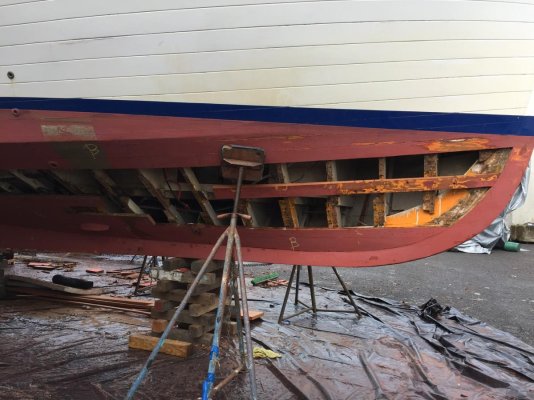bjensen
Veteran Member
My GB with twin 120 Lehman’s in on the hard. It getting cold, engines don’t want to start. What would be best way to get antifreeze in the system and how much. Will be mid 20s for a couple of nights.
Bottom of boat has many planks off.
Bottom of boat has many planks off.

 But you also need to winterize the potable water system, the raw water system feeding the A/C, the waste system, etc.
But you also need to winterize the potable water system, the raw water system feeding the A/C, the waste system, etc.